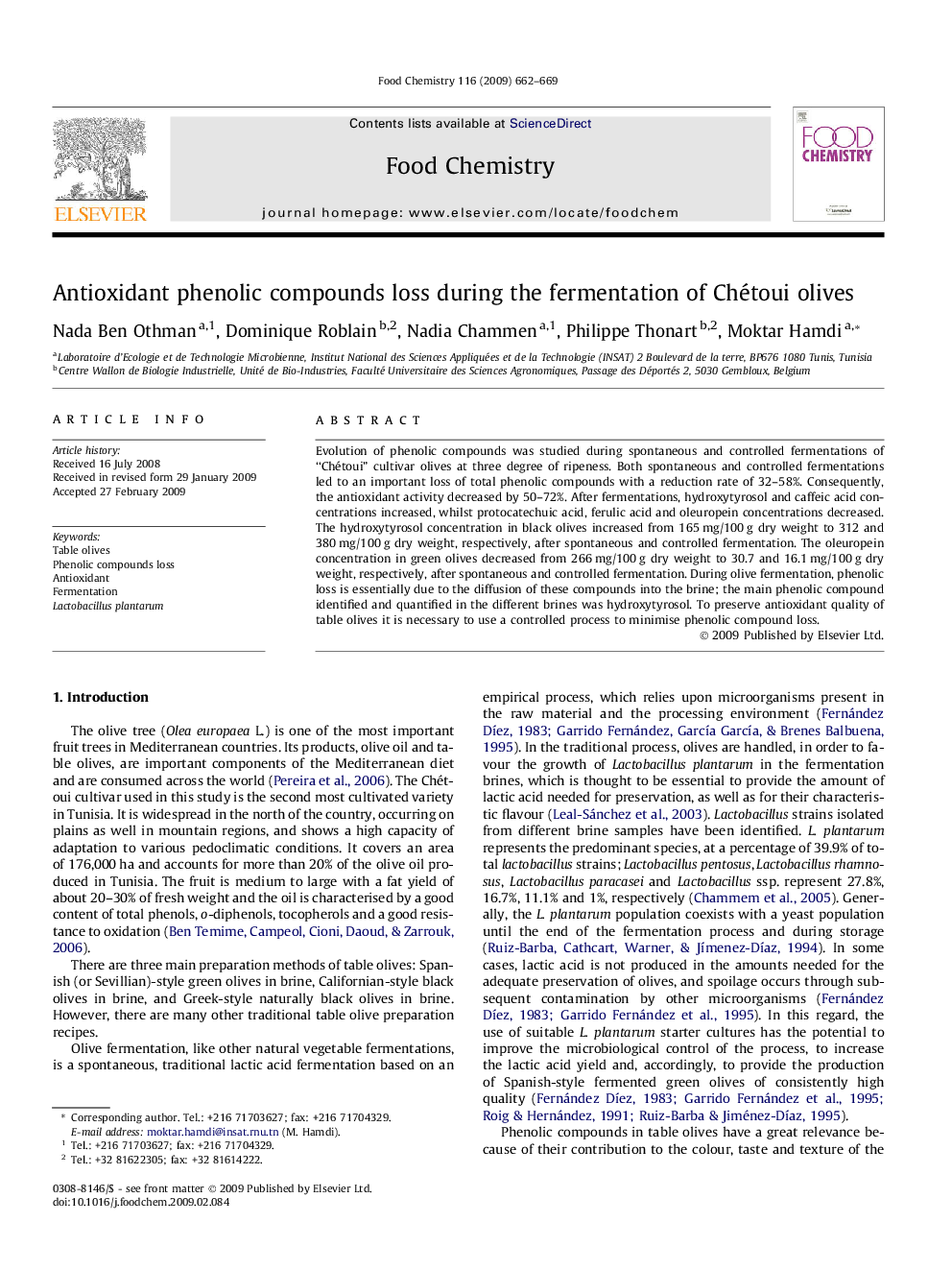| کد مقاله | کد نشریه | سال انتشار | مقاله انگلیسی | نسخه تمام متن |
|---|---|---|---|---|
| 1185942 | 963420 | 2009 | 8 صفحه PDF | دانلود رایگان |

Evolution of phenolic compounds was studied during spontaneous and controlled fermentations of “Chétoui” cultivar olives at three degree of ripeness. Both spontaneous and controlled fermentations led to an important loss of total phenolic compounds with a reduction rate of 32–58%. Consequently, the antioxidant activity decreased by 50–72%. After fermentations, hydroxytyrosol and caffeic acid concentrations increased, whilst protocatechuic acid, ferulic acid and oleuropein concentrations decreased. The hydroxytyrosol concentration in black olives increased from 165 mg/100 g dry weight to 312 and 380 mg/100 g dry weight, respectively, after spontaneous and controlled fermentation. The oleuropein concentration in green olives decreased from 266 mg/100 g dry weight to 30.7 and 16.1 mg/100 g dry weight, respectively, after spontaneous and controlled fermentation. During olive fermentation, phenolic loss is essentially due to the diffusion of these compounds into the brine; the main phenolic compound identified and quantified in the different brines was hydroxytyrosol. To preserve antioxidant quality of table olives it is necessary to use a controlled process to minimise phenolic compound loss.
Journal: Food Chemistry - Volume 116, Issue 3, 1 October 2009, Pages 662–669